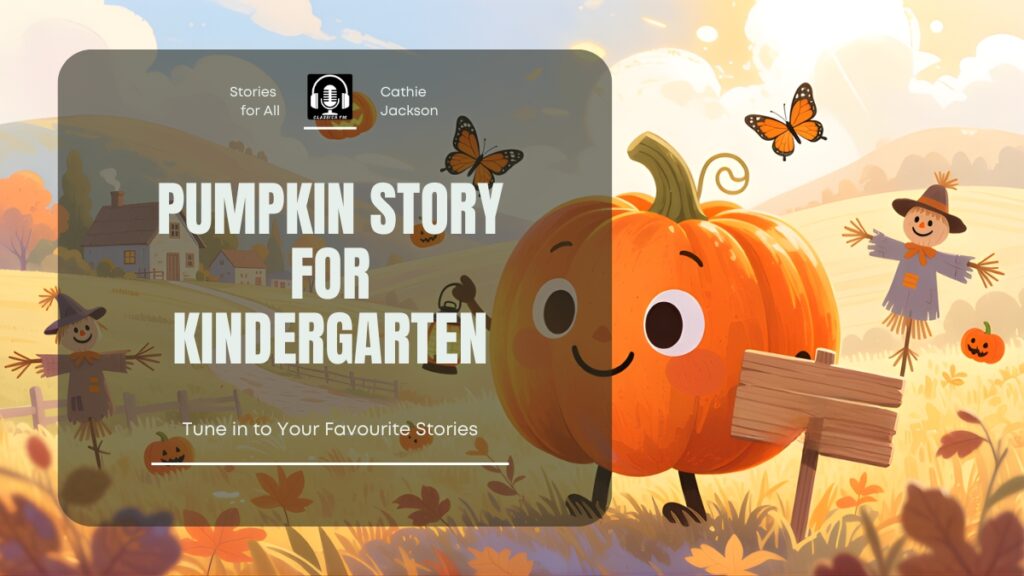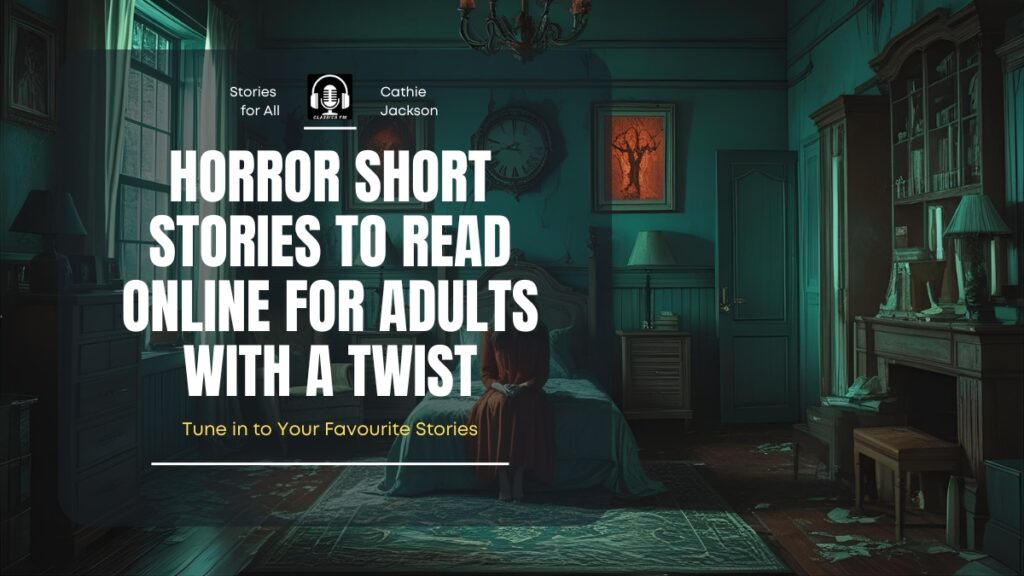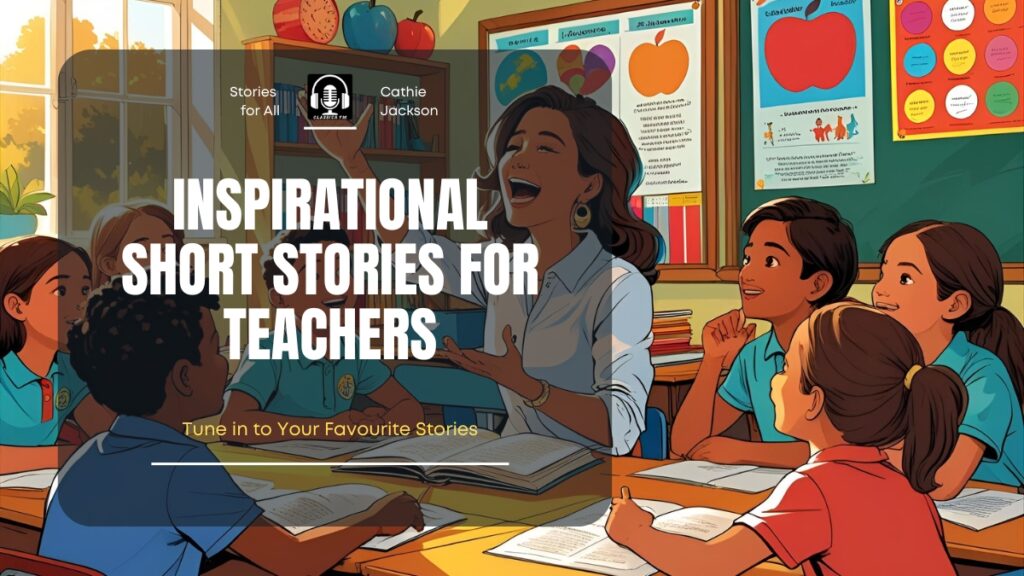Pumpkins are a perfect teaching tool. They are colorful and familiar. They invite touch, smell, and hands on exploration.
A pumpkin story for kindergarten helps children connect words to real objects. It supports vocabulary growth and early math skills. It also opens doors to science concepts like life cycles and decay.
Educators have long used pumpkin investigations to strengthen language, motor skills, and observation. Small group pumpkin work and sensory exploration are recommended best practices for young children.
Learning Objectives
By the end of this lesson learners will be able to:
- Retell a short pumpkin story for kindergarten in their own words.
- Count and sort pumpkin seeds up to 20.
- Describe three parts of a pumpkin using new vocabulary.
- Make a prediction about what happens when a pumpkin decays.
- Participate in a group craft and follow two step directions.
Materials List
- One small pumpkin per table or one large pumpkin for the whole group.
- Plastic knives for adult use.
- Spoons and scoops.
- Paper plates, markers, glue, and construction paper.
- Seed trays or small cups for counting seeds.
- Magnifying lenses or clear boxes to observe seeds.
- Wet wipes and towels for cleanup.
Safety note: Provide child size tools only when supervised and follow safe use guidance.
Pumpkin Story for Kindergarten
Once upon a time in a sunny pumpkin patch, a tiny pumpkin dreamed of becoming the biggest and brightest pumpkin in the world, but what happened next filled the whole garden with autumn magic.
1. The Little Pumpkin Who Loved to Shine
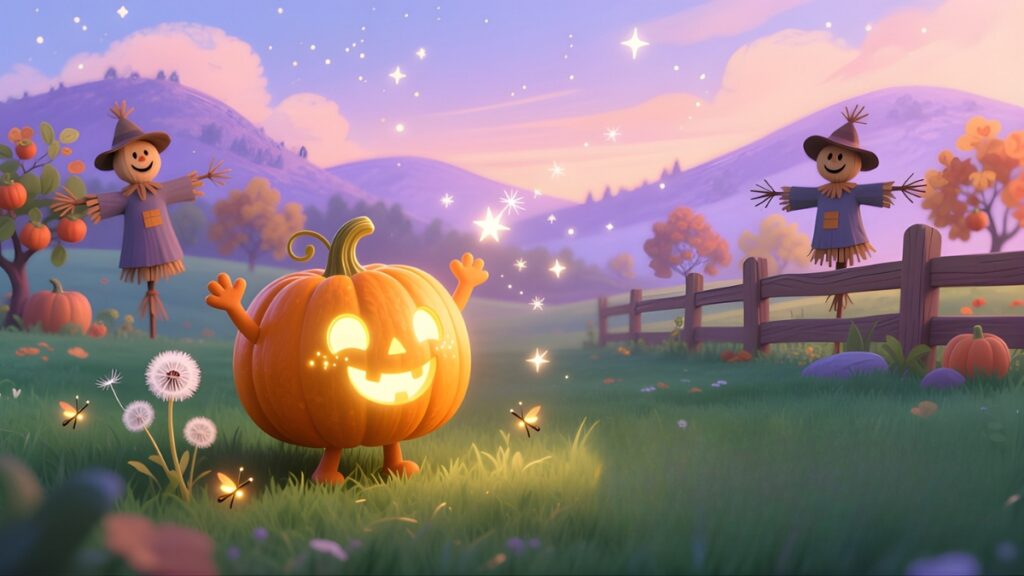
In a quiet pumpkin patch at the edge of a golden farm, there lived a tiny pumpkin named Poppy.
All the pumpkins around her were big, round, and plump. They wore proud smiles as they soaked up the sunshine every day. But Poppy was small, shy, and a little pale compared to the others.
Every morning, Poppy stretched her green vines and tried to grow bigger.
“Maybe tomorrow I’ll be as bright as the others,” she whispered.
But no matter how hard she tried, she stayed small and light orange.
One night, as the moon peeked over the hill, Poppy sighed.
“I wish I could shine like the stars,” she said softly.
To her surprise, the moon heard her wish.
“Why do you want to shine, little pumpkin?” asked the moon in a gentle voice.
“I want to make people happy,” said Poppy. “But I’m too small for anyone to notice me.”
The moon smiled kindly.
“You don’t need to be big to shine. You just need a kind heart.”
The next evening, the farmer’s children came to pick pumpkins for Halloween.
They passed by all the big ones first. But then they noticed something magical — Poppy’s soft orange skin was glowing faintly under the moonlight.
“Look! That one is glowing!” said little Emma, pointing in wonder.
The children ran to pick her up carefully.
They placed her in a basket and took her home. That night, they carved a happy smile on her face and set a candle inside.
When the light flickered, it danced gently through Poppy’s glowing skin.
She wasn’t the biggest or the roundest, but she became the prettiest pumpkin lantern on the porch.
Everyone who passed by smiled when they saw her gentle glow.
Poppy was finally shining — not just with light, but with happiness.
From that night on, she learned that real brightness doesn’t come from size or color.
It comes from the goodness inside.
And up in the sky, the moon winked at her proudly.
Moral: You don’t have to be big or perfect to shine. Even small hearts can light up the world with kindness.
2. Peter’s Pumpkin Parade
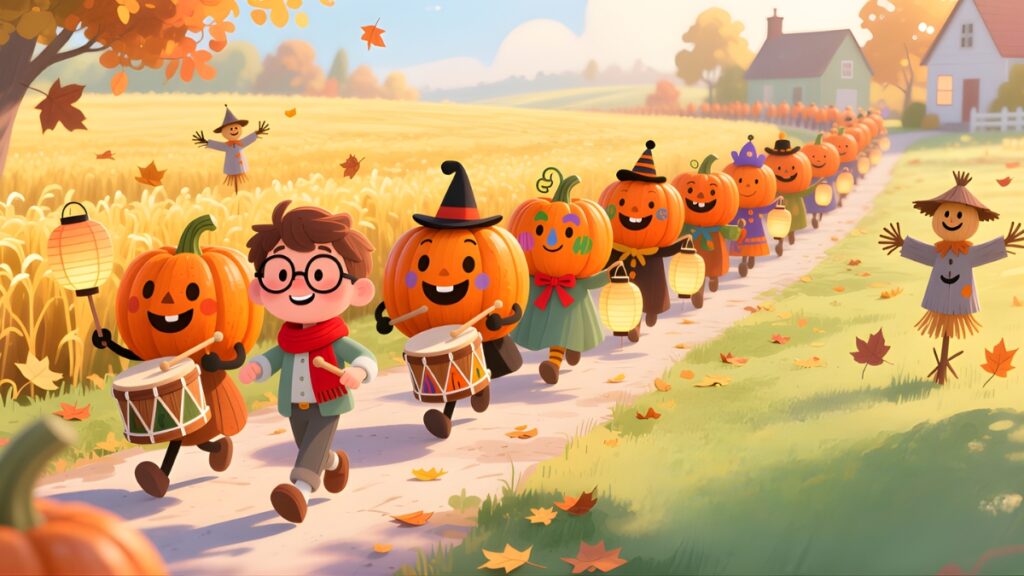
Peter lived on a little farm with his grandma.
One sunny morning, he planted a tiny pumpkin seed in the soft, brown soil.
“Take care of it every day, Peter,” said Grandma. “Pumpkins need love to grow big and strong.”
Peter watered the seed, sang songs to it, and even told it funny stories.
Days turned into weeks.
Slowly, a green sprout poked out of the soil.
“Hello, little pumpkin!” Peter said happily.
He watered it every morning and every evening. He pulled out weeds and made sure it had plenty of sunshine.
The little pumpkin grew bigger and bigger each day.
By autumn, it was round, bright orange, and plump.
Peter was very proud.
One morning, Peter had an idea.
“I will show everyone how amazing my pumpkin has grown!” he said.
He rolled it gently down the path to the village.
People stopped and stared.
“Wow! Look at that pumpkin!” shouted the baker.
“It’s huge!” said the teacher.
Children ran after Peter, clapping and laughing.
Soon, more farmers brought their pumpkins too.
Everyone rolled their pumpkins together, forming a long, colorful parade through the village.
There were big pumpkins, small pumpkins, round pumpkins, and tall pumpkins.
All the villagers cheered and waved.
Peter’s tiny seed had started a new tradition — the very first Pumpkin Parade.
At the end of the parade, Peter placed his pumpkin in the center of the village square.
It shone under the autumn sun, bright and proud.
Grandma hugged Peter tightly.
“You did a wonderful job, Peter,” she said. “See what love and care can grow?”
Peter smiled.
From that day on, every autumn, children and families came together to roll their pumpkins in the parade.
And every year, Peter remembered the tiny seed he planted and how it grew into something magical.
Moral: With love, care, and patience, even small beginnings can grow into something wonderful.
3. The Pumpkin Who Wanted to Fly
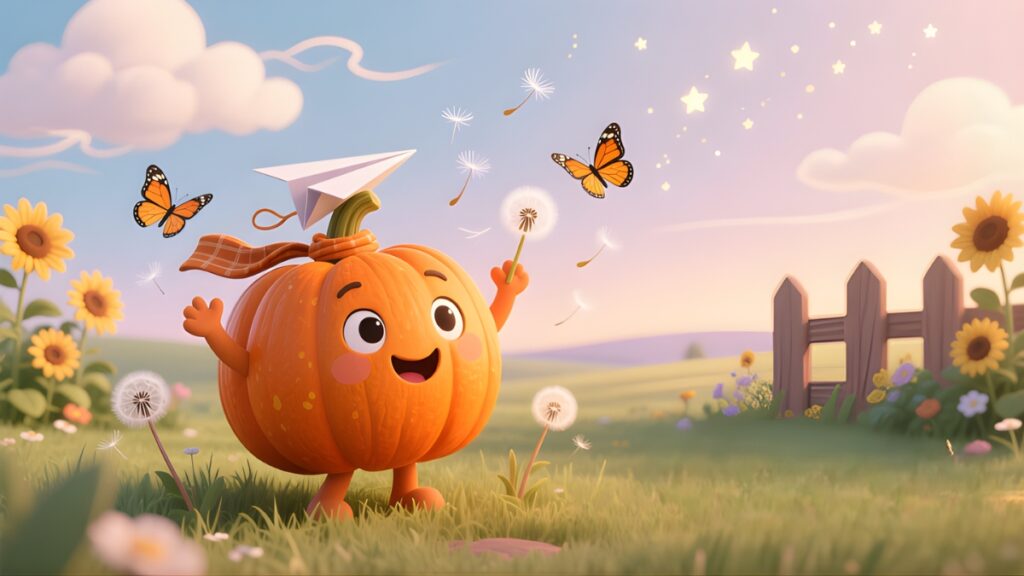
In a bright pumpkin patch on a windy hill, there lived a little pumpkin named Pico.
Pico loved to watch the birds soar high in the sky.
“I wish I could fly like them,” he said, looking at the clouds.
The other pumpkins laughed.
“Pumpkins don’t fly, Pico!” they said. “You’re supposed to stay on the ground.”
But Pico didn’t listen. He dreamed of soaring above the trees, feeling the wind on his skin.
One sunny afternoon, a strong gust of wind swept through the patch.
Pico wiggled and rolled as fast as he could.
“Maybe today is my flying day!” he shouted.
The wind lifted him just a little. Pico bounced down the hill, tumbling over leaves and rolling through the grass.
He laughed and laughed.
“Look! I’m flying!” Pico cried, spinning in the air.
At the bottom of the hill, he landed safely in a hay cart.
“Wow! That was amazing!” said a little girl picking apples nearby.
Pico felt proud. He hadn’t flown like a bird, but he had soared higher than any pumpkin had ever dared.
Every day after that, Pico waited for the wind. He rolled, he wiggled, and sometimes he even bounced onto piles of leaves.
The other pumpkins started cheering for him.
“You may not fly like the birds, Pico,” they said, “but you fly in your own way!”
One chilly evening, Pico noticed the moon rising over the hill.
He whispered softly, “Thank you for letting me fly, even just a little.”
From that day on, Pico realized that dreams don’t always look like you imagine them.
Sometimes, they come in fun, surprising ways.
And while he never left the ground for long, Pico felt as free as the birds in the sky.
The little pumpkin learned that flying isn’t always about leaving the earth.
It’s about finding joy in every bounce, tumble, and spin.
Pico smiled as the stars twinkled above. He knew that with hope, courage, and a little wind, even a pumpkin could feel like it was flying.
Moral: Dreams can come true in unexpected ways, and joy is often found in the journey, not just the destination.
4. Penny and the Pumpkin Patch Secret
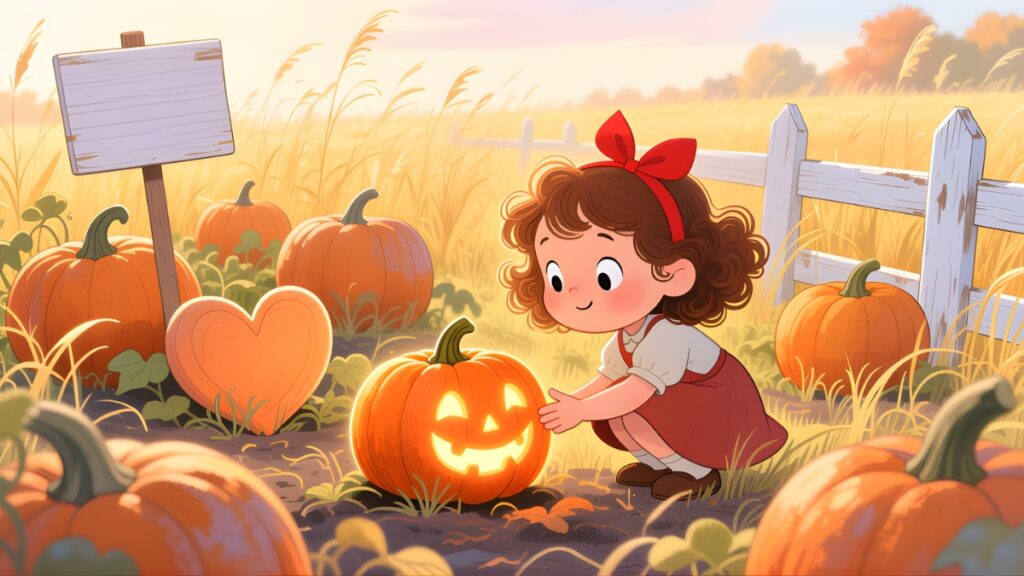
Penny loved visiting her grandma’s pumpkin patch every autumn.
The air smelled sweet and earthy, and orange pumpkins of all sizes dotted the green vines.
One sunny morning, Penny skipped through the rows, looking for the perfect pumpkin.
She spotted a tiny pumpkin hiding under a big leafy vine.
It had a heart-shaped leaf right on top of its stem.
“Hello, little pumpkin,” Penny said softly.
To her surprise, the pumpkin seemed to glow a little when she spoke kindly to it.
“I wonder if you like my stories,” Penny giggled.
Every day, Penny came back. She watered the pumpkin gently, told it fairy tales, and even sang songs while she skipped around it.
Slowly, the little pumpkin began to grow faster than all the others.
One afternoon, Penny noticed something magical.
The heart-shaped leaf sparkled in the sunlight, and tiny vines stretched proudly toward the sky.
Grandma came over and smiled.
“Penny, do you see that? Your pumpkin is special,” she said.
“How did it grow so fast?” Penny asked.
Grandma winked. “Sometimes, love and kindness help things grow in ways we can’t imagine.”
Penny hugged the little pumpkin.
“I guess my words and care helped you, little one,” she said.
By Halloween, the pumpkin had grown round and bright orange.
Penny and her grandma carried it to the porch and placed a happy face on it.
When the candle was lit, the pumpkin glowed like a little lantern.
Everyone who saw it smiled, amazed by its soft, magical glow.
Penny realized the pumpkin’s secret wasn’t just the heart-shaped leaf.
It was all the love she gave it every day.
From that day on, Penny visited the pumpkin patch not just to pick pumpkins, but to care for them, share stories, and make the patch full of laughter and magic.
And the little pumpkin? It never forgot Penny’s gentle words.
It grew up happy, proud, and bright, showing everyone that kindness can make ordinary things extraordinary.
Moral: Love and kindness help things grow, and small acts of care can create magic in unexpected ways.
5. The Brave Pumpkin on Halloween Night
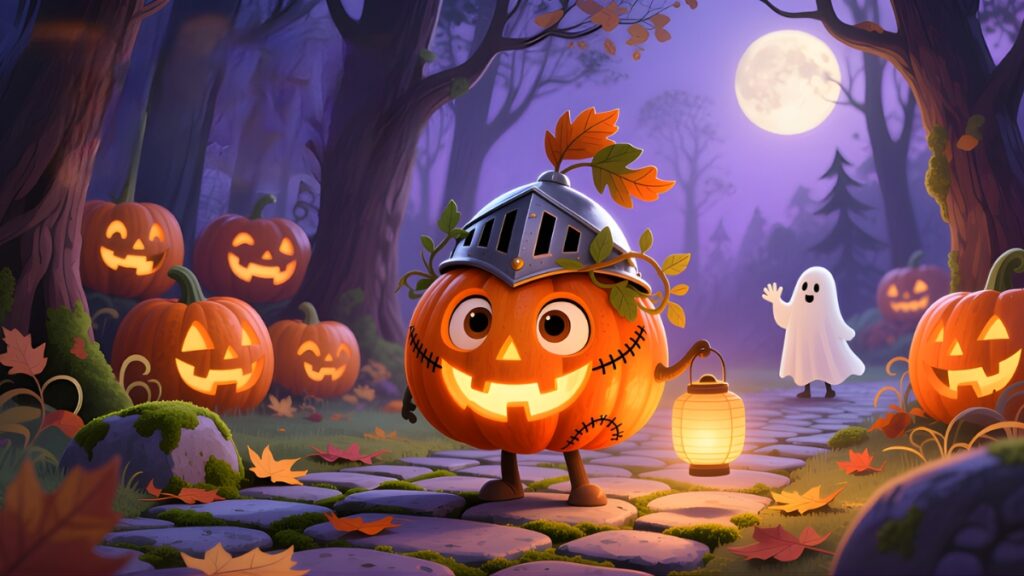
In a quiet pumpkin patch, all the pumpkins were nervous.
Halloween night was coming, and they had heard scary stories about ghosts, witches, and howling winds.
Most pumpkins trembled at the thought.
But not Bruno, the roundest and brightest pumpkin in the patch.
“I’m not afraid,” Bruno said confidently.
The other pumpkins whispered.
“Bruno, it’s too spooky! What if something scary happens?”
Bruno smiled.
“Sometimes, facing your fears can make you stronger,” he said.
The night of Halloween arrived.
The wind whistled through the trees. Shadows danced across the fields.
One by one, children came to pick pumpkins. They carried lanterns and wore costumes, laughing and shouting.
The other pumpkins quivered.
Bruno stayed steady.
When a little girl picked him up, he felt a shiver of excitement.
She carved a big, cheerful smile on his face and placed a candle inside.
The flickering light made Bruno glow warmly.
Suddenly, a gust of wind blew through the yard, rattling doors and windows.
Some pumpkins nearly toppled over.
But Bruno stayed upright, shining bravely for everyone.
The children cheered when they saw him glowing.
“Look at that brave pumpkin!” they shouted.
Bruno realized he wasn’t just glowing for himself. He was helping the other pumpkins feel safe too.
The night went on, and Bruno stayed bright, lighting up porches and pathways.
By the end of Halloween, every pumpkin was proud.
They had faced the night and discovered that fear could be turned into courage.
Bruno smiled under the moonlight, happy to have helped his friends.
The children went home, still talking about the brave little pumpkin who shone brighter than anyone else.
From that night on, Bruno became the pumpkin everyone remembered.
Not because he was the biggest or the roundest, but because he was brave when it mattered most.
And in the quiet pumpkin patch, the other pumpkins whispered,
“Maybe we can be brave too.”
Moral: Courage isn’t about being fearless. It’s about shining brightly even when you feel scared.
6. The Pumpkin Painter’s Magic Brush
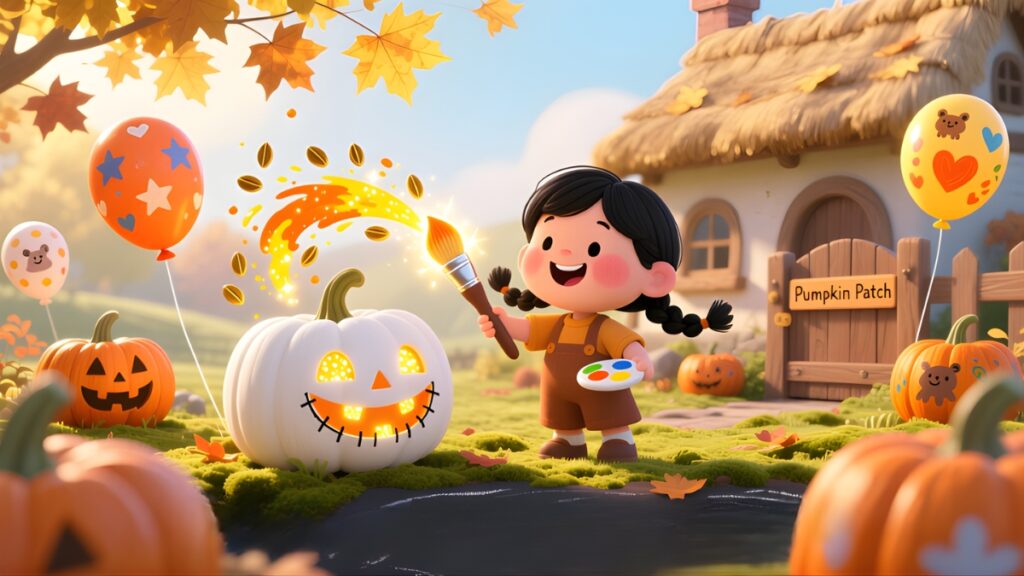
A young girl named Tia loved visiting her grandma’s pumpkin patch every autumn.
Tia had a special hobby. She loved to paint funny faces on pumpkins.
One sunny morning, she dipped her brush in bright orange paint and began to decorate a small pumpkin.
Suddenly, something magical happened.
The brush sparkled in her hand.
Tia blinked. The pumpkin wiggled its vines and giggled!
“Did you just move?” Tia gasped.
“Yes!” said the pumpkin. “Your brush is magic!”
Tia’s eyes grew wide. She painted a bigger pumpkin with a smiling face.
It bounced a little and waved its tiny stem like a hand.
Soon, all the pumpkins around her started talking and giggling.
Tia laughed and laughed.
“This is amazing!” she said.
Together, Tia and her magic brush decorated every pumpkin in the patch.
Some pumpkins got silly mustaches.
Some got big, happy eyes.
Some even wore tiny painted hats!
The pumpkins danced around as Tia painted.
Neighbors came to see the magical pumpkin patch.
They clapped and cheered at the funny, glowing pumpkins.
Tia felt proud.
Her brush hadn’t just painted pumpkins.
It had brought the whole patch to life.
At sunset, the pumpkins lined up in a parade, showing off their bright, cheerful faces.
Tia smiled as she waved to them.
“Thank you for being my friends,” she said.
The pumpkins wiggled and cheered back.
That night, Tia realized something important.
It wasn’t the magic brush that made the pumpkins special.
It was the love, creativity, and joy she put into her painting.
From that day on, every autumn, Tia returned to the pumpkin patch.
With her brush in hand, she painted pumpkins that made everyone smile, laugh, and feel happy.
And even though the magic brush was special, the real magic came from her heart and imagination.
Moral: Creativity and kindness can bring joy to everyone, and a little imagination can turn ordinary things into something magical.
7. The Pumpkin Who Found a Friend
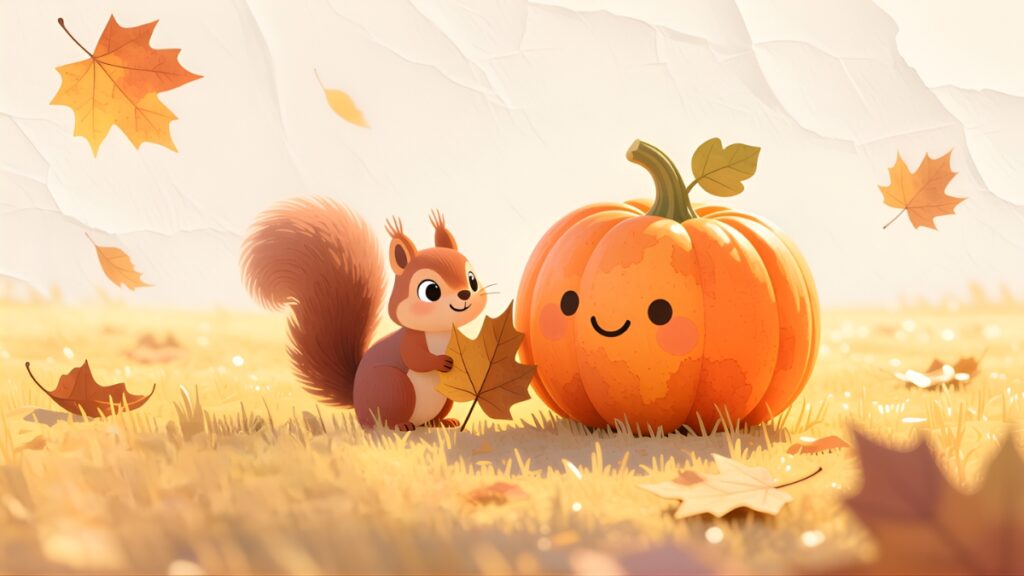
In a quiet pumpkin patch, there lived a small, lonely pumpkin named Pip.
Pip was tiny compared to the other pumpkins.
He watched the bigger pumpkins being picked first and smiled quietly, even though he felt left out.
“I wish I had a friend,” Pip whispered to the wind.
One crisp autumn morning, a curious little squirrel scurried through the patch.
The squirrel’s name was Squeaky, and he was looking for a warm, cozy place to build his winter nest.
When Squeaky spotted Pip, he stopped.
“This little pumpkin looks perfect!” he chirped.
The squirrel began gathering leaves, twigs, and soft moss.
He built a tiny nest right beside Pip.
At first, Pip didn’t know what to do.
But then Squeaky whispered, “Hello! Can I be your friend?”
Pip felt his little vine stretch with happiness.
“Yes!” he said softly.
From that day on, Pip and Squeaky were inseparable.
The squirrel told stories, shared nuts, and even tickled Pip’s stem with tiny paws.
Pip, in return, glowed brighter every day.
The other pumpkins noticed the change.
“Look at Pip!” they said. “He’s smiling and shining!”
Pip realized something important.
Friends make even the smallest pumpkins feel big and special.
As autumn days passed, Pip and Squeaky played together in the sunshine, rolled down gentle hills, and shared quiet moments under the moonlight.
Even when the wind blew and the leaves rustled, Pip felt safe because he had a true friend.
One chilly evening, Pip whispered to Squeaky,
“Thank you for finding me. I’m never lonely again.”
Squeaky smiled.
“Friends don’t let friends feel alone,” he said.
When Halloween arrived, Pip was chosen by a kind child who placed him on a porch.
He glowed happily, not because of the candle inside, but because he knew friendship was the greatest light of all.
Pip realized that being small didn’t matter.
What mattered was having someone who cared, shared, and laughed with you.
And in the quiet pumpkin patch, Pip and Squeaky stayed together, reminding everyone that true friends make life brighter, warmer, and full of joy.
Moral: Friendship is the greatest gift. Even the smallest or loneliest hearts can shine brightly when they have a friend.
Read Aloud Tips
- Show the pumpkin at the start. Let children touch it.
- Pause after each line. Ask prediction questions.
- Point out new words like rind, stem, seeds, and pulp.
- Use different voices for Mina and the pumpkin.
- Revisit the story across the week.
Extensions and Activities
Pumpkin Science: Dissection and Observation
Activity: Cut open a pumpkin and let children scoop seeds.
Learning targets: observation, sensory language, counting.
Talk points: What does the inside feel like? How many seeds did you find? What color is the pulp? For a video model of a pumpkin science lesson see this PBS PreK segment.
Pumpkin Math
- Count seeds into groups of 5.
- Sort seeds by size.
- Make simple bar graphs showing seed counts.
PBS offers printable pumpkin math activities that align well with this work.
Pumpkin Art and Fine Motor
- Make pumpkin faces with paper shapes.
- Create pipe cleaner pumpkins for finger strength exercises.
- Paint a pumpkin still life.
Craft ideas and printable guides are available from trusted kids craft resources.
Language and Literacy
- Label pumpkin parts on a chart.
- Do a sequencing activity using three picture cards: seed, sprout, pumpkin.
- Invite children to draw and dictate an ending for the story.
Life Cycle and Science Talk
Teach the pumpkin life cycle from seed to vine to fruit. Encourage children to make predictions and note changes over time. This supports language and science learning at once.
Sample 5 Day Unit Plan (Kindergarten)
Day 1: Read the pumpkin story for kindergarten. Explore a real pumpkin. Vocabulary focus.
Day 2: Dissect the pumpkin. Seed counting and sensory journals.
Day 3: Math centers with pumpkin counting and simple graphs.
Day 4: Art center and fine motor pumpkin crafts.
Day 5: Story retell and class pumpkin parade. Display student work.
Assessment and Evidence of Learning
Use these quick checks:
- Child retells the story with 3 or more events.
- Child counts seeds to 20 or demonstrates grouping by 5.
- Child uses vocabulary words rind, stem, seed, and pulp.
Document progress with photos and short notes.
Safety and Accessibility
- Always supervise tool use. Teach safe cutting with adult only knives.
- Provide gloves for children with allergies.
- Offer large print or tactile story cards for children with low vision.
- Use simple language and visuals for English language learners.
NAEYC guidance stresses small group and safety when exploring pumpkins.
Differentiation Ideas
- For advanced learners give a simple seed counting challenge up to 100.
- For emergent learners use hand over hand support for scooping.
- For speech goals have children repeat target words in short phrases.
- Use picture prompts and gestures to aid understanding.
Tips for Engaging Families
- Send a short note explaining the unit.
- Invite families to donate small pumpkins or clean jars for seed roasting.
- Share photos and a short video of the pumpkin exploration.
- Offer a recipe for roasted seeds so families can try a healthy snack at home.
Adapted Mini Lesson: 10 Minute Circle Time
- Show the pumpkin. Let two children touch it.
- Read three short paragraphs from the pumpkin story for kindergarten.
- Ask one recall question.
- Sing a short pumpkin song and end.
Scripted Questions for Comprehension
- Where did the little pumpkin live?
- Who helped the pumpkin glow?
- What did Mina put inside the pumpkin?
- What do you think will happen to the pumpkin after winter?
Sample Assessment Rubric (Quick)
- Emerging: Names 1 pumpkin part.
- Developing: Retells 2 events. Counts to 10.
- Proficient: Retells 3 events. Counts to 20. Uses new vocabulary.
FAQs: Pumpkin Story for Kindergarten
Q: How long should a pumpkin story for kindergarten read aloud take?
A: Keep read alouds short. Aim for 5 to 10 minutes. Pause for questions.
Q: Can I read the pumpkin story for kindergarten to a mixed age group?
A: Yes. Tailor questions for younger and older children. Use extra details for older kids.
Q: Are pumpkin seeds safe for young children?
A: Seeds must be served in age appropriate ways. For children under three avoid whole seeds due to choking risk. Roast and crush if needed and follow school nutrition guidance.
Q: What if I do not have a real pumpkin?
A: Use pictures, stuffed pumpkins, or craft pumpkins. Use tactile materials such as orange play dough.
Q: Where can I find printable pumpkin math activities?
A: PBS Parents and similar educational sites offer free printable activities and guides.
Quick Checklist for Teachers
- Read the pumpkin story for kindergarten aloud once.
- Prepare a pumpkin and clean work area.
- Gather gloves, spoons, and trays.
- Plan small groups for the dissection.
- Reserve time for art and math centers.
- Send a family note with nutrition and safety info.
Conclusion
A well planned pumpkin story for kindergarten gives children rich language, real science, and joyful math. Use the short script, the activities, and the assessment ideas in this guide.
Show a real pumpkin. Let children touch and count and talk. This simple unit builds vocabulary, curiosity, and confidence.
Try it this week and share your results with families. If you want, I can make printable templates and a 5 day slide plan next.

